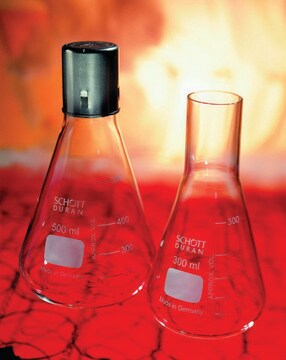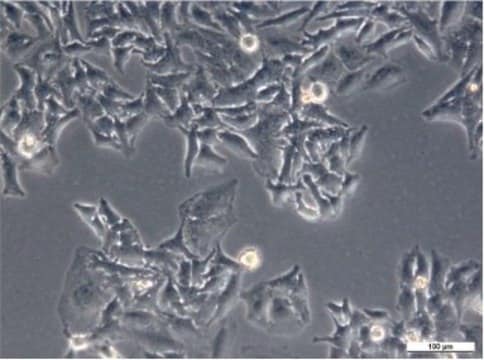HeLa-Mitotrap
15042201, human cervix, Epithelial, polygonal
About This Item
Produits recommandés
Nom du produit
HeLa-Mitotrap, 15042201
Source biologique
human cervix
Description
Human cervix carcinoma, knocksideways, rapid protein inactivation by rerouting to mitochondria for functional studies, genetically modified
Mode de croissance
Adherent
Morphologie
Epithelial, polygonal
Technique(s)
cell culture | mammalian: suitable
Conditions d'expédition
dry ice
Température de stockage
−196°C
Description de la lignée cellulaire
The HeLa-Mitotrap cell line is a stably transfected HeLa cell line expressing a mitochondrial trapping protein containing an FRB domain. The term FRB refers to a protein containing FKBP12 and Rapamycin Binding (FRB) domains within the mTOR (mammalian Target of Rapamycin) protein. The Hela-Mitotrap cell line can be transfected to express the target protein of interest genetically modified to have an FKBP domain. Upon treatment of the cells with rapamycin target proteins containing an FKBP domain will dimerize with FRB domains. The resulting protein complexes are sequestered to the mitochondria.
Treatment of cell lines containing both FRB and FKBP rapamycin binding proteins can sequester target proteins to the mitochondria within minutes of treatment rendering the cells ready for immediate assay. This type of approach, referred to as ‘‘knocksideways,′′ should be widely applicable as a means of inactivating proteins within a timescale of seconds or minutes rather than days.
The derivation of the expression construct for the generation of the FRB expressing HeLa cell line is described in Motley et.al (2006, PMID: 17035630)The Mito-YFP-FRB construct was based on a pEYFP-FRB plasmid (O. Glebov, MRC Laboratory of Molecular Biology, Cambridge, UK). The N-terminal sorting signal of Tom70p was amplified by PCR from yeast genomic DNA and cloned into the plasmid, then the Mito-YFP-FRB coding sequence was moved into the retroviral vector pQCXIH (Clontech), which carries a hygromycin resistance gene. Stable cell lines were selected using hygromyin selection.
Milieu de culture
Procédure de repiquage
Autres remarques
Clause de non-responsabilité
Faites votre choix parmi les versions les plus récentes :
Certificats d'analyse (COA)
It looks like we've run into a problem, but you can still download Certificates of Analysis from our Documents section.
Si vous avez besoin d'assistance, veuillez contacter Service Clients
Déjà en possession de ce produit ?
Retrouvez la documentation relative aux produits que vous avez récemment achetés dans la Bibliothèque de documents.
Notre équipe de scientifiques dispose d'une expérience dans tous les secteurs de la recherche, notamment en sciences de la vie, science des matériaux, synthèse chimique, chromatographie, analyse et dans de nombreux autres domaines..
Contacter notre Service technique






